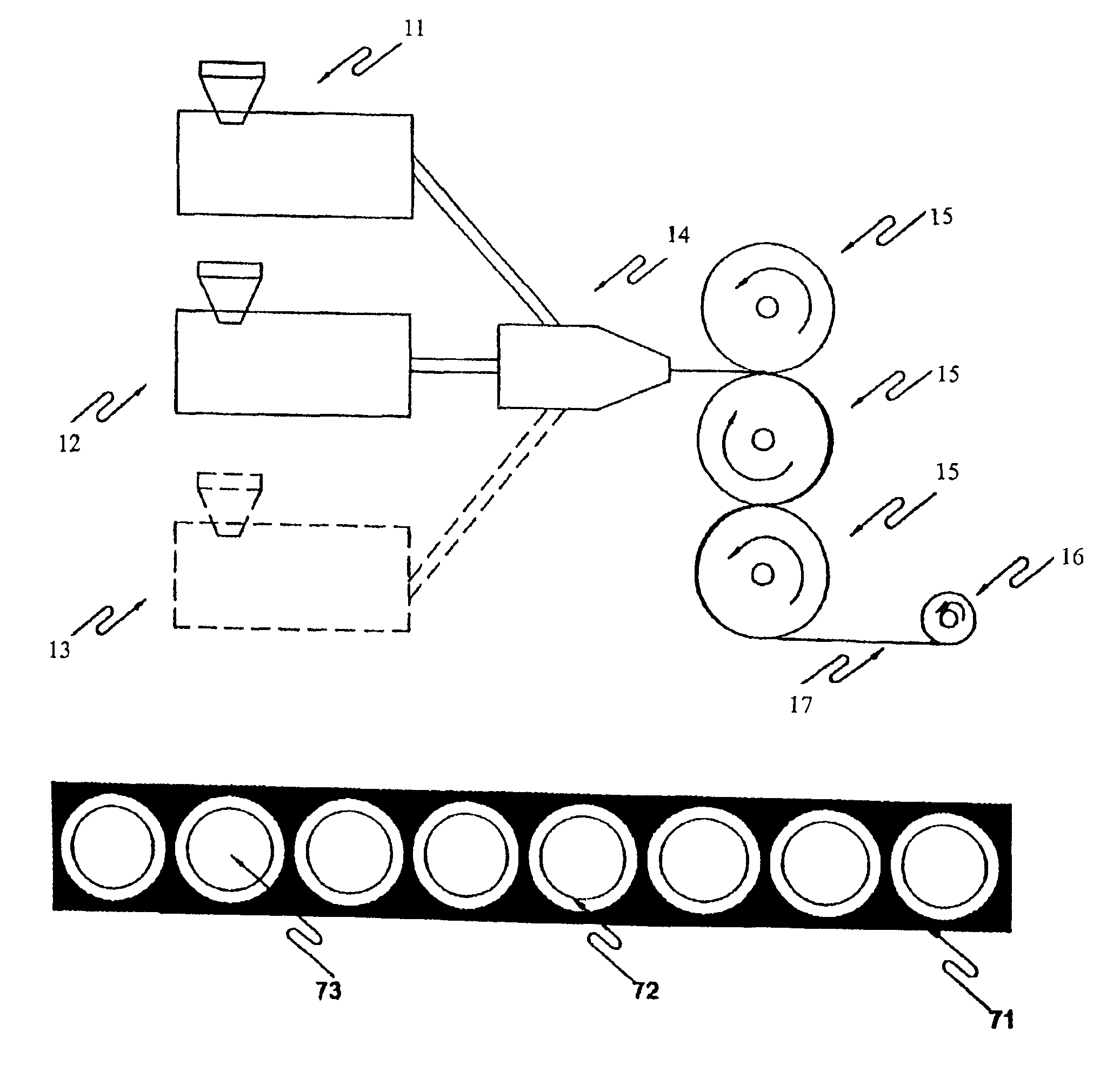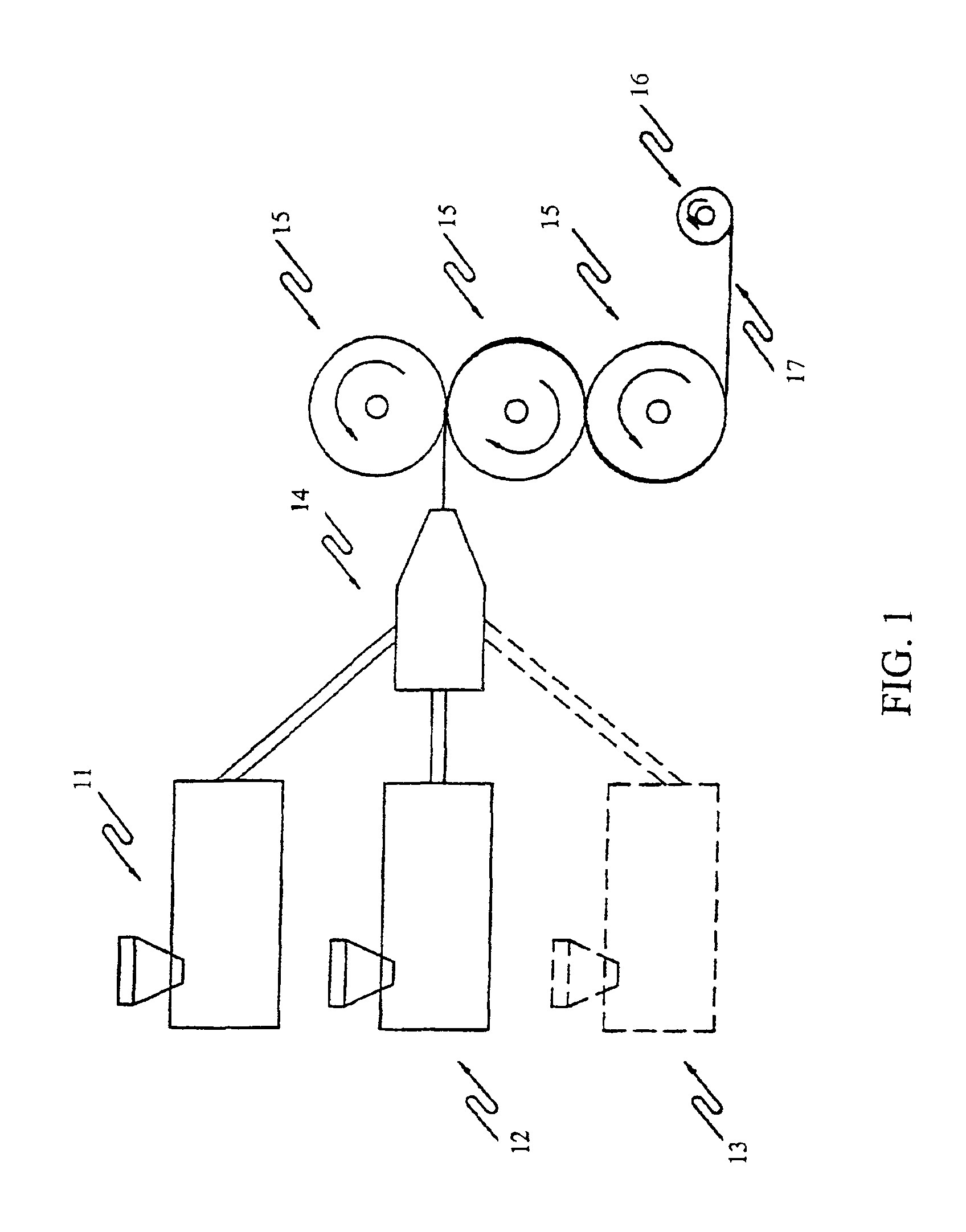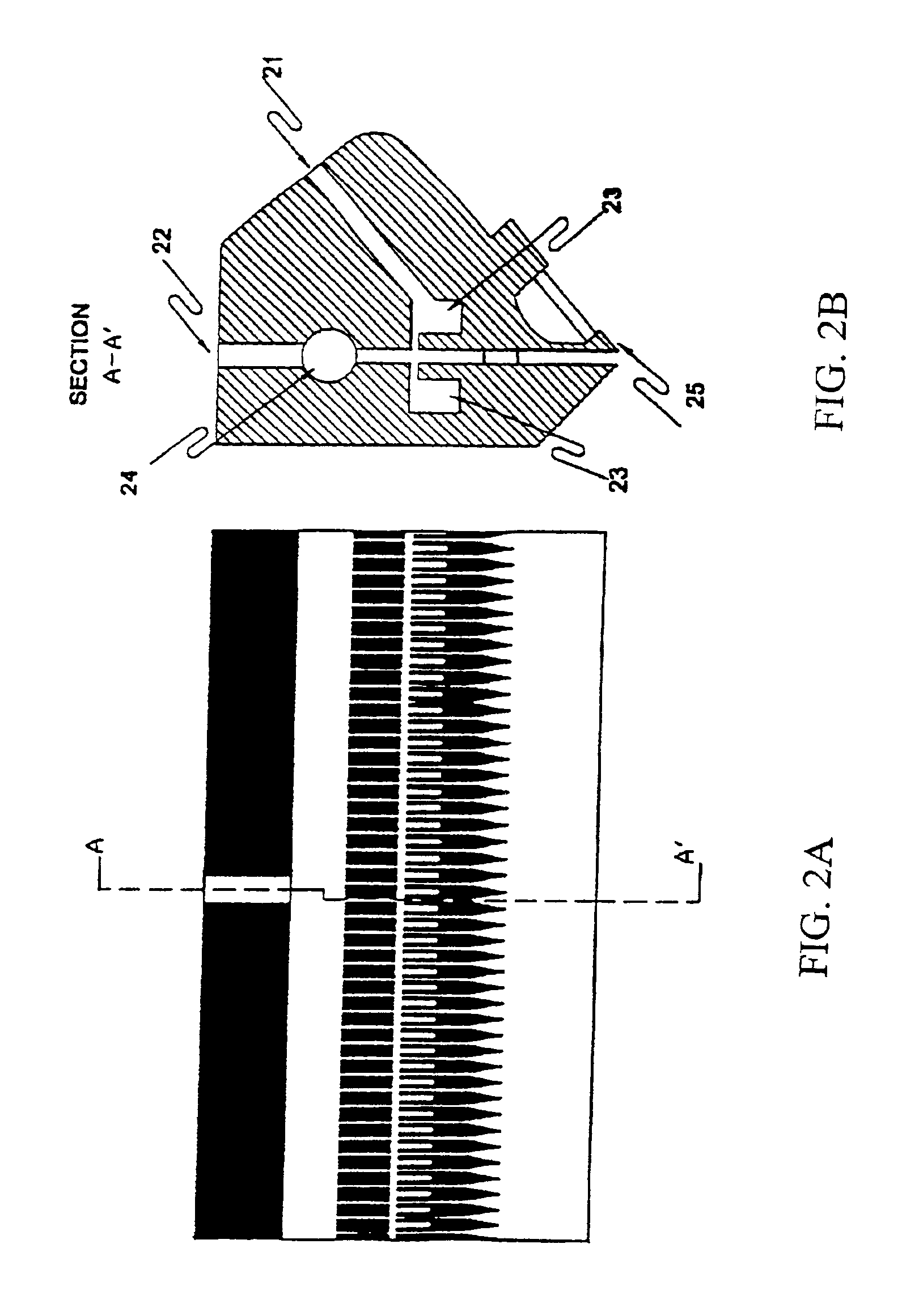Method and apparatus for fabrication of plastic fiber optic block materials and large flat panel displays
a technology of plastic fiber optic blocks and flat panel displays, which is applied in the direction of instruments, other domestic objects, optical elements, etc., can solve the problems of inefficient and complicated way of achieving the inability to efficiently utilize the method of making optical arrays or matrices with very fine cores, and the serious deterioration of the effect of cladding achieved in this way, etc., to achieve good light transmission, easy connection, and high resolution
- Summary
- Abstract
- Description
- Claims
- Application Information
AI Technical Summary
Benefits of technology
Problems solved by technology
Method used
Image
Examples
example 1
Production of Massive Fiber Optic Plate with Fibers Parallel to the Normal to the Plate Surface
[0149]Polystyrene containing 3% by weight of diphenyl sulphide was selected as the core material. Polymethylmethacrylate with 3% by weight of Tributyl phosphate was selected as the cladding material. Polymethylmethacrylate containing 5% by weight of carbon black in the form of particles whose average size was less than 0.2 microns was selected as the sea material.
[0150]The above materials were extruded through a die similar to that shown in FIG. 6, having an exit slit 50 cm wide. The fiber center-to-center spacing in the drawn sheet was 25 μm and the die was designed to produce four rows of fibers with a final sheet thickness of about 100 μm. The structure of the core holes in the die was an oval with major and minor axes of 200 μm and 27 μm respectively. The total fiber array was 4×20,000 and a schematic of a short section of this type of ribbon is shown in FIG. 7C. The temperature of the...
example 2
Continuous, High-Speed Production of Massive Fiberoptic Plate Using Adhesive Between Sheets
[0154]Sheet was produced using the materials given in Example 1. The fiber center-to-center spacing in the drawn sheet was 100 microns and there were four rows of fibers with a final sheet thickness of about 400 microns. The width of the cut sheet was 46.0 cm as in Example 1. Sheet was produced at the rate of 20 meters per minute.
[0155]The winding fixture shown schematically in FIGS. 12 and 13 was four meters in length. Winding of the sheet was begun. When the first layer of sheet on one side of the fixture was laid, a spray of adhesive was made to cover the surface of the sheet. As the fixture rotated, a second sheet layer was laid on top of the adhesive. As the second sheet came into contact with the adhesive, a roller pressed the second sheet into intimate contact with the adhesive and, thereby, the first sheet. The adhesive used was DARC CURER® manufactured by Dymax, Torrington, Conn. Imme...
example 3
Production of Massive Fiber Optic Plate with Fibers Parallel to the Plate Surface
[0159]It is desired to produce a plate 114 cm×85 cm×8.5 cm thick with fibers beginning and ending on the sides whose areas are 114×8.5 cm2.
[0160]Core material was chosen to be polystyrene. The cladding material was polymethylmethacrylate with 3% by weight of methyl perfluorooctanate. In this case, sea material was not employed. A 120 cm wide die similar to that shown in FIG. 2 was used with four rows of core holes, each hole having dimensions 32 μm×300 μm.
[0161]Extrusion was carried out as in Example 1 and the extruded sheet was cut to produce a final width of 113.9 cm and the fiber cores were approximately circular and about 30 μm diameter and had axis-to-axis distance of 34 μm. The fiber array in the final sheet was 4×33,500.
[0162]The 136 μm thick sheet was wound on to a pair of 114 cm wide rotating fixtures, the length of which were 175 cm as shown schematically in FIGS. 12 and 13. A total of 625 lay...
PUM
| Property | Measurement | Unit |
|---|---|---|
| Length | aaaaa | aaaaa |
| Diameter | aaaaa | aaaaa |
| Diameter | aaaaa | aaaaa |
Abstract
Description
Claims
Application Information
 Login to View More
Login to View More - R&D
- Intellectual Property
- Life Sciences
- Materials
- Tech Scout
- Unparalleled Data Quality
- Higher Quality Content
- 60% Fewer Hallucinations
Browse by: Latest US Patents, China's latest patents, Technical Efficacy Thesaurus, Application Domain, Technology Topic, Popular Technical Reports.
© 2025 PatSnap. All rights reserved.Legal|Privacy policy|Modern Slavery Act Transparency Statement|Sitemap|About US| Contact US: help@patsnap.com



